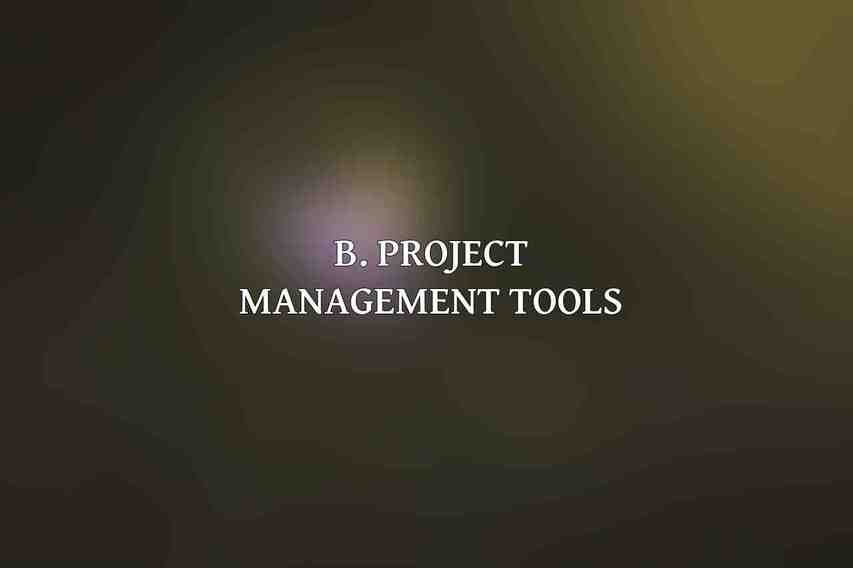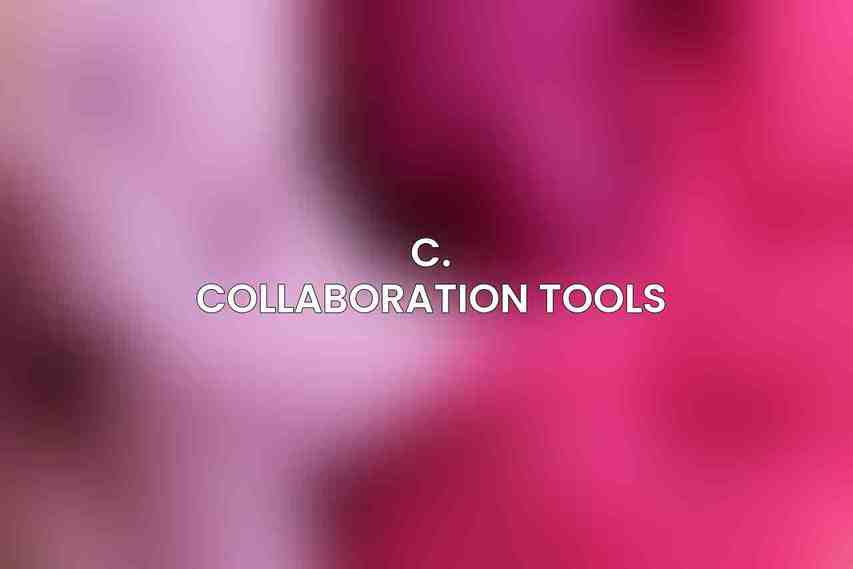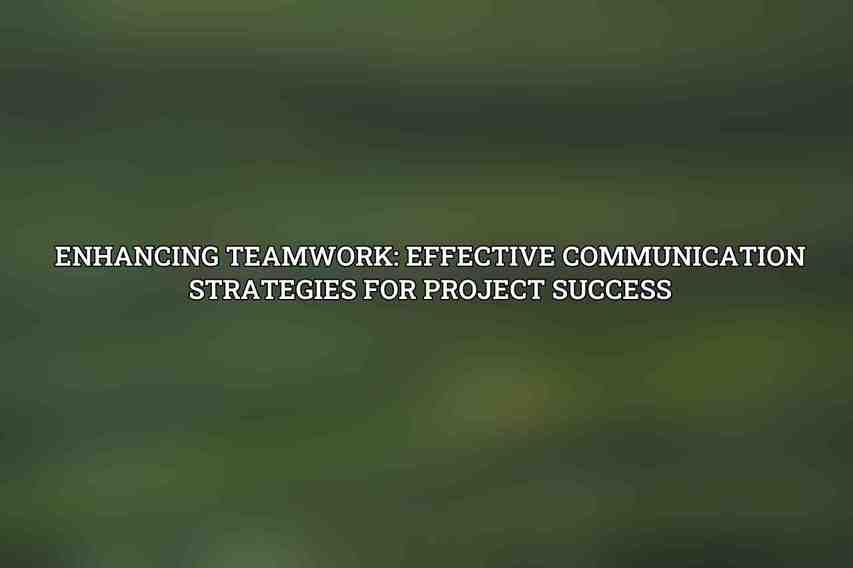Effective communication is the cornerstone of successful team projects. In this fast-paced and interconnected world, the ability to communicate clearly and efficiently is crucial for ensuring project success. By fostering a culture of open and effective communication, teams can enhance collaboration, boost productivity, and achieve their project goals in a timely manner.
Effective communication in team projects involves the exchange of information, ideas, and feedback among team members to achieve common objectives. It plays a vital role in ensuring that all team members are on the same page, working towards a shared goal. The importance of effective communication cannot be overstated as it helps prevent misunderstandings, reduces errors, and fosters a positive team environment.
Enhanced communication in team projects brings a myriad of benefits to the project outcomes. It leads to improved decision-making, increased productivity, and enhanced efficiency. When team members communicate effectively, they can resolve issues promptly, share knowledge and expertise, and build strong working relationships that contribute to the overall success of the project.
Communication Strategies for Team Projects
A. Interpersonal Communication
- Active Listening: Active listening involves fully concentrating, understanding, responding, and remembering what is being said. It is a fundamental skill for effective communication as it shows respect, builds trust, and avoids misunderstandings.
- Clear and Concise Language: Using clear and concise language helps ensure that messages are easily understood by all team members. Complex ideas should be simplified to facilitate comprehension and avoid misinterpretation.
- Nonverbal Cues: Nonverbal cues such as gestures, facial expressions, and body language play a significant role in conveying messages and understanding emotions in communication.
- Emotional Intelligence: Developing emotional intelligence enables team members to recognize and manage their emotions effectively, leading to better communication, conflict resolution, and relationship building within the team.
B. Written Communication
- Project Documentation: Comprehensive project documentation ensures that all team members have access to essential information, guidelines, and updates related to the project.
- Email: Email remains a primary form of communication in most professional settings. Clear and structured emails help convey messages efficiently and keep the team informed.
- Messaging Tools: Utilizing messaging tools like Slack, Microsoft Teams, or other team collaboration platforms enables real-time communication, file sharing, and seamless interactions among team members.
C. Technology-Mediated Communication
- Video Conferencing: Video conferencing tools like Zoom or Skype facilitate face-to-face communication, even for remote teams, fostering a more personal and engaging interaction.
- Collaboration Platforms: Platforms such as Basecamp or Asana streamline project management and communication by centralizing tasks, progress updates, and discussions in one place.
- Instant Messaging: Instant messaging apps like Slack or Microsoft Teams provide a quick and informal way for team members to communicate, ask quick questions, and stay connected throughout the workday.
Communication Tools and Resources
Effective communication in team projects is greatly enhanced by leveraging various communication tools and resources tailored to streamline interactions and facilitate collaboration. Below are some key communication tools commonly used in project settings:
A. Communication Management Software
| Software | Description |
|---|---|
| Basecamp | A project management and communication tool that centralizes project activities, tasks, and discussions. |
| Slack | A messaging platform designed for teams to collaborate on projects, share files, and communicate in channels. |
| Microsoft Teams | A unified communication platform that integrates chat, video meetings, file storage, and app integration for team collaboration. |
B. Project Management Tools

| Software | Description |
|---|---|
| Asana | A project management tool that enables teams to organize tasks, track progress, and foster collaboration in a visual manner. |
| Trello | A flexible project management tool based on boards and cards that boost team productivity and organization. |
| Jira | An issue and project tracking software for agile teams, providing tools for planning, tracking, and managing software development projects. |
C. Collaboration Tools

| Software | Description |
|---|---|
| Google Docs | An online word processing tool that allows real-time collaboration on documents, enhancing teamwork and document sharing. |
| Microsoft OneDrive | A cloud storage service enabling file sharing, synchronization, and collaboration among team members. |
| Dropbox Paper | An online collaborative workspace where teams can create, review, and share documents, fostering seamless collaboration. |
Communication Plan Development
Developing a robust communication plan is essential for ensuring that team members are aligned, informed, and engaged throughout the project lifecycle. The key components of a communication plan include: Read more on Mastering Teamwork: Tracking and Analyzing Team Performance with Project Management Tools
A. Establishing Communication Channels
Reducing the likelihood of misunderstandings or missed messages.
B. Setting Communication Frequency
Determining how often and through what means communication will occur helps maintain a regular exchange of information while preventing overload or gaps in communication. Find more on Seamless Integration: Combining Collaboration Tools with Your Current Workflows
C. Defining Communication Roles and Responsibilities
Avoid confusion, and ensure that important messages reach the right individuals in a timely manner.
Stay tuned for Part 2 for the continuation of the article.
Frequently Asked Questions
1. How important is effective communication in teamwork for project success?
Effective communication is crucial in teamwork for project success as it ensures everyone is on the same page, minimizes misunderstandings, and fosters collaboration among team members. You can find more information on Top Project Management Tools for Enhancing Team Collaboration in 2024
2. What are some strategies for improving communication within a team?
Some strategies for improving communication within a team include establishing clear expectations, encouraging open dialogue, actively listening to each other, and providing regular feedback.
3. How can technology aid in enhancing communication among team members?
Technology can aid in enhancing communication among team members by providing tools for seamless collaboration such as project management software, messaging platforms, video conferencing, and shared document repositories.
4. What are some common barriers to effective communication in a team setting?
Some common barriers to effective communication in a team setting include poor listening skills, cultural differences, lack of clarity in communication, conflicting priorities, and communication breakdowns.
5. How can team leaders promote a culture of effective communication within their teams?
Team leaders can promote a culture of effective communication within their teams by leading by example, setting clear communication expectations, fostering an environment of trust and respect, and providing opportunities for team members to share their thoughts and ideas openly. Check this blog on How to Build a Strong Culture of Collaboration within Project Teams

